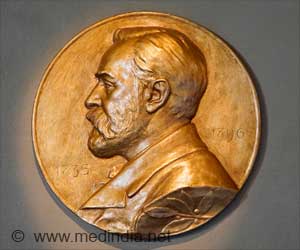According to a recent study published for the first time, researchers have made the first causal connection between concentrations of oxidized phospholipids and the risk of coronary artery disease (CAD).
As levels were also closely related to those of Lp(a) lipoprotein, the researchers suggest that that the established ability of the latter to promote atherosclerosis may be partly mediated by the proinflammatory oxidized phospholipids that are bound to it.Lp(a) lipoprotein is composed of apolipoprotein (apo) B-100, to which apo(a) is covalently bound.
Believing that oxidized phospholipids on lipoproteins containing apo B-100 may explain some of the atherogenic properties of Lp(a) lipoprotein, Sotirios Tsimikas (University of California, San Diego) examined whether oxidized phospholipid levels were related to CAD in 504 patients undergoing angiography. The oxidized phospholipid content per particle of apo B-100 - otherwise known as the oxidized phospholipid: apo B-100 ratio - was determined from oxidized low-density lipoprotein levels.
Researchers say that the ratio correlated strongly with Lp(a) lipoprotein levels, with both measures showing a strong and graded association with the presence and extent of CAD (p<0.001 in both cases). In patients aged 60 years or less, those in the highest quartiles for oxidized phospholipid: apo B-100 ratio (<0.294) were more likely than those in the lowest quartile (>0.047) to have CAD (41% vs 19%, odds ratio [OR]=3.12), and the same was true for Lp(a) lipoprotein levels (<39.7 vs >8.8 mg/dl, 61% vs 30%, OR=3.64, p<0.001 in both cases).
Results indicated that in all participants, the association of oxidized phospholipid: apo B-100 ratio with obstructive CAD was independent of all clinical and lipid measures, apart from Lp(a) lipoprotein. For individuals aged 60 years or under, the ratio remained an independent predictor of CAD.
In conclusion researchers say that in settings of enhanced oxidative stress and elevated Lp(a) lipoprotein levels, a pro-inflammatory milieu may predominate that contributes to the clinical expression of cardiovascular disease.
Advertisement











